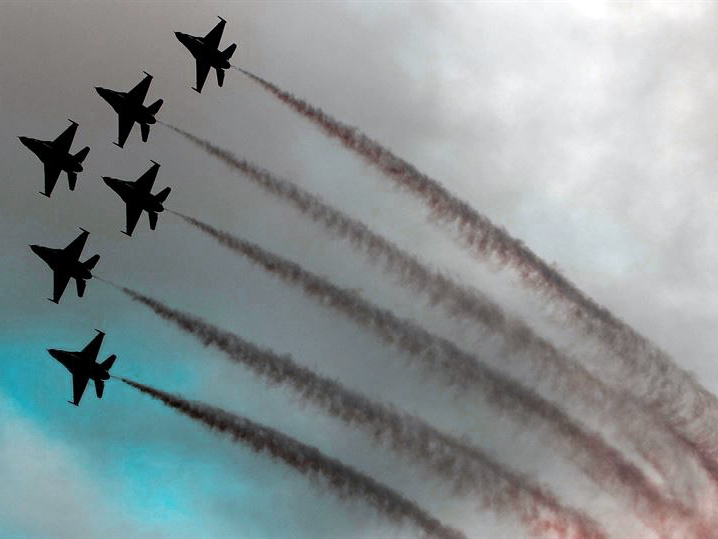In February 2019 over forty Indian paramilitary troops were killed in an attack later claimed by Jaish-e-Muhammad, a proscribed organization. Following this militant attack, tensions between India and Pakistan began to soar. India conspiratorially blamed the attack on Pakistan and Prime Minister Narendra Modi suspiciously vowed to isolate Pakistan from the international community and withdrew the Most Favored Nation status for Pakistan. Pakistan’s Foreign Office condemned the attack and called it a matter of grave concern, and further called Indian envoy to lodge a strong protest in response to the Indian allegations and threats.
The rivalry between India and Pakistan dates back to their inception in 1947. Both states share hostile clashes with each other and the region of Kashmir has been the main issue of contention. Since the forced annexation by India in 1947, three wars over the region have been fought and to date, Kashmir remains a disputed territory and faces illegal and illegitimate Indian occupation. In 1948, a United Nations Resolution asked for a plebiscite that never took place.
Since then India has perpetuated a litany of atrocities in Kashmir. What had happened in Kashmir in February 2019 was an outcome of countless series of never-ending brutalities, use of pellet guns, curfews and enforced disappearances that led to Pulwama. In reality, BJP was preparing the ground to win upcoming elections and use Kashmir as a battleground to achieve electoral objectives.
Immediately after the Pulwama attack, a series of reactions came from the Indian side. A curfew was imposed in Indian Occupied Kashmir as a ‘precautionary measure’ after protests over Pulwama terror attack. The Indian Army was called to control the situation and India launched a diplomatic offensive against Pakistan. Indian Ministry of External Affairs repeatedly harped on a supposed role of Pakistan in Pulwama. Pakistan’s Foreign Minister responded that Islamabad was ready to cooperate if New Delhi shared evidence. “If India has any evidence about the involvement of elements in Pakistan in the Pulwama attack, it should share with us. We will investigate with full honesty and see if it was right’’. Pakistan also informed the United Nations and apprised them about the deteriorating security situation between the two states and the risk of threats of the use of force against Pakistan.
Meanwhile, Pakistan’s Prime Minister Imran Khan authorized the country’s armed forces to respond resolutely and comprehensively to any aggression or misadventure by India. Pakistan’s military also warned of a befitting response in case of any escalation by India. Pakistan used both diplomatic and military options to communicate its readiness to resist any Indian belligerence.
Behind this entire conspiracy was the Indian electoral objective. Making Pulwama attack a basis of its propagated election-winning tool, India kept demonstrating aggressive behavior despite repeated warnings from Pakistan. On February 26, India launched an offensive against Pakistan which was codenamed as ‘Operation Bandar’. The twelve Indian Air Force Mirage-2000s jet fighters from No. 1 Tiger Squadron took part in the operation. They were airborne directly from their home base in Gwalior, in the Indian state of Madhya Pradesh. These fighter jets were loaded with Spice-2000 satellite-guided bombs. The Indian jets crossed Himachal Pradesh and Kashmir to the target area. Indian Aircraft attempted to penetrate through four different directions i.e. Sir Creek, Rahim Yar Khan, Fazilka Sector and Kashmir area. They were intercepted by Pakistan’s air defense near Kashmir. Within the time span of fifteen minutes, Pakistani aircraft immediately scrambled to safeguard the airfields from any anticipated misadventure from the Indian side. On the spontaneous response from the Pakistan Air Force, Indian fighter jets were forced to drop five bombs each weighing 1000 kilograms near Balakot Sector inside Pakistan’s territory. India claimed to launch five of the six Spice-2000 bombs but failed to provide any proof of the damage that India claimed.
In response, Pakistan warned that it will respond to this Indian violation of LOC and reiterated that its armed forces are fully prepared for a befitting response to any Indian aggression. The country’s army and air force leadership deliberated readiness, coordination, and cooperation on the operational environment including any threat and response across Line of Control and working boundary. Pakistan’s Prime Minister also warned that in case of any aggression ‘’Pakistan will not think about retaliating, Pakistan will retaliate at its own time of choosing’’. He also emphasized that this action from IAF was carried out to achieve electoral objectives in the election environment, putting regional peace and stability at stake.
On February 27th, 2019 Pakistan Air Force decided to launch a well-calibrated response. This Operation was given the name ‘Operation Swift Retort’. Unlike Indian Operation Bandar, it was conducted in broad daylight. The mission included F-16s and JF-17s in the air-to-air role with Thunders and Mirages in the strike role. They were supported by DA-20 and SAAB 2000 Airborne Early Warning & Control System (AEW&C) with pinpoint precision. Pakistan chose six Indian military targets in the IOK, Poonch, Naria support depot and forward support depot in the Nowshera sector. The target for impact was chosen slightly away from the infrastructure in order to avoid any collateral damage and escalation in the region. After hitting their intended targets successfully, PAF pilots also destroyed two Indian aircraft across LoC. In subsequent air battle, Pakistan Air Force shot down IAF’s Sukhoi SU-30MKI and Mig-21 Bison aircraft of Indian Air Force. During this, Wing Commander Abhinandhan Varthaman, Officer Commanding No. 51 Squadron of IAF, flying the ill-fated Mig-21 Bison tail number CU-2328 was hit and taken into captivity by Pakistan Army. He was later released by the Prime Minister of Pakistan as a goodwill gesture in a televised ceremony that was broadcast to the world.
The astounding response by PAF left the Indian Air Force humiliated and in utter confusion. IAF SPYDER battery at Srinagar also shot down a friendly MI-17 helicopter killing all six personnel on board. This entire air battle made for a classic case of fratricide by a confused and panicked air force. PAF pilots left a mark on history that shall not be expunged from the Indian minds. International media declared Pakistan Air Force victorious in the dogfight.
Meanwhile, IAF absurdly claimed that Abhinandhan somehow shot one of Pakistan’s F-16 during the fight. Contrary to IAF’s claims, a foreign journalist reported that United States officials recently completed a physical count of Pakistan’s F-16 and found none missing. Pakistan Air Force demonstrated that Abhinandhan’s Mig-21, missile tail sections loaded with two R-73s and R-77s, were found attached to the launcher, hence proving that they were not even fired from the aircraft; and these are in custody of Pakistan Air Force.
Following the Pulwama attack, India annexed Kashmir illegally on August 5th, 2019. Tensions between Pakistan and India remain high. India continues with its nefarious activities such as mislabeling civilian aircraft to spark a conflict deceitfully. The onus is on India to learn from its mistakes, and recognize that violence is not the answer. If they continue to harbor delusions there will be many such swift retorts to come their way.
Etfa Khurshid Mirza works as a researcher at Centre for Aerospace and Security Studies (CASS). Her area of specialization is Nuclear and Strategic Affairs.





